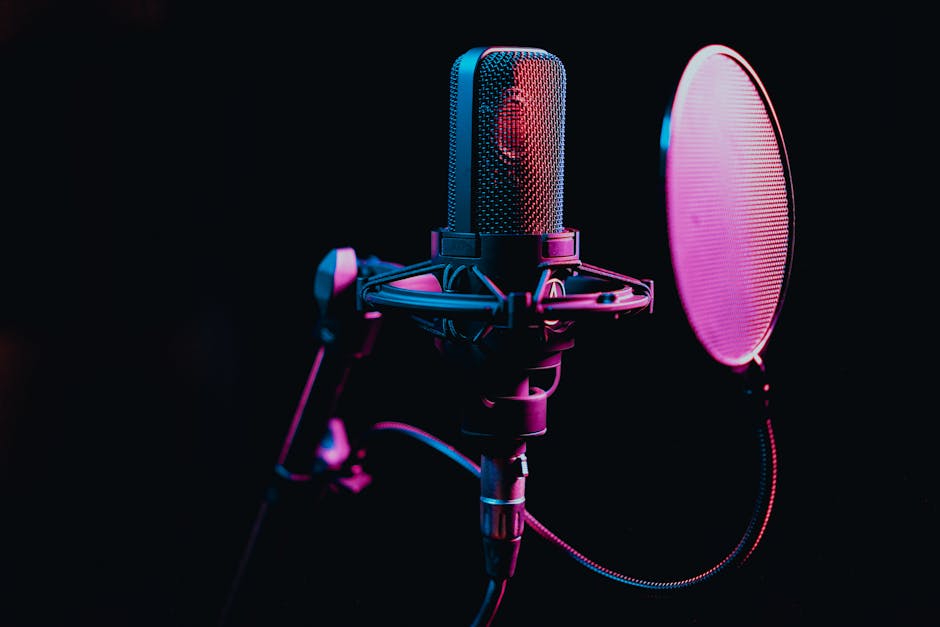The Impact of Room Acoustics on My Recording Quality (my Diy Solutions).
The Impact of Room Acoustics on My Recording Quality (my Diy Solutions)
For years, I chased that elusive “professional sound” in my home recordings. I upgraded microphones, invested in better preamps, and even spent countless hours honing my mixing skills. Yet, something always felt off. My vocals sounded distant, my guitars lacked punch, and my drums were a muddy mess. It wasn’t until I truly confronted the elephant in my recording room – its terrible acoustics – that everything began to click. This isn’t just a technical article; it’s my personal journey through the frustrating world of untreated rooms and how my DIY solutions ultimately transformed my recording quality from amateur to something I’m genuinely proud of.
My Frustrating Sonic Reality: The Untreated Room’s Recording Curse
I started out like many home studio enthusiasts: a bedroom, a microphone, and a dream. But that dream quickly turned into a nightmare of reflections and resonances. Every recording felt like it was happening in a cavern, regardless of how close I got to the mic. It was a constant battle against the room itself, and the more I tried to fix it with EQ and compression in post-production, the worse it often sounded.
The Echo Chamber Effect: Why My Vocals Lacked Intimacy
My voice, which sounded perfectly fine to my ears in person, would come across as thin, distant, and swimming in reverb on recordings. This wasn’t the kind of lush, controlled reverb you add for effect; it was uncontrolled, natural room reverb, a cacophony of sound waves bouncing off every hard surface. This “echo chamber effect” made my vocals sound disconnected from the music, robbing them of the intimacy and presence I desperately wanted.
Bass Bloat and Treble Tangle: When Instruments Fought for Space
It wasn’t just vocals. My acoustic guitar recordings often had an undefined, boomy low-end that clashed with everything else. Electric guitars, even direct into an amp simulator, picked up unwanted room reflections that made them sound harsh and unfocused. And drums? Forget about it. The kick drum would rumble indefinitely, the snare would ring with an unpleasant metallic overtone, and the cymbals would splash into an indistinct wash of high frequencies. Every instrument seemed to be fighting the room, not blending with each other.
Unmasking the Acoustic Villains: How My Room Degraded My Sound
Before I could fix anything, I had to understand what was actually happening. It wasn’t just “bad sound”; there were specific acoustic phenomena at play. My room, a fairly standard rectangular bedroom with drywall, a wooden floor, and minimal soft furnishings, was a perfect storm for sonic problems. Learning about these issues was the critical first step in devising my DIY solutions.
Pinpointing the Problem: Reverberation Time and Flutter Echo
The primary culprit was excessive reverberation time. This is how long it takes for a sound to decay in a room. In my untreated space, sounds lingered far too long, smearing transients and blurring the clarity of my recordings. Closely related was “flutter echo,” a rapid succession of discrete echoes between parallel reflective surfaces (like my opposing walls). This created a metallic, buzzing sound that was particularly noticeable on percussive elements and vocal sibilance.

The Menace of Standing Waves: Muddy Low-End Woes
My bass problems weren’t just general boominess; they were often exacerbated by standing waves, also known as room modes. These occur when sound waves at certain frequencies reinforce each other as they bounce between parallel surfaces, creating areas of extreme bass build-up (nodes) and cancellation (anti-nodes). This meant that depending on where my microphone or ears were, the bass could sound overwhelming or completely disappear, making accurate mixing impossible. I even used a room mode calculator to get a rough idea of my room’s problem frequencies.
First Reflection Points: The Sneaky Sound Distorters
Another major revelation was understanding first reflection points. These are the spots on your walls, ceiling, and floor where sound from your speakers (or instruments) hits first before reaching your ears (or microphone). These early reflections arrive at your ears slightly delayed and out of phase with the direct sound, causing comb filtering – a series of peaks and dips in the frequency response that subtly but significantly degrade sound quality, making it sound hollow or phasey. Identifying these points became crucial for my DIY treatment plan.
From Cardboard to Clarity: My Hands-On DIY Acoustic Treatment Strategy
Once I understood the problems, the next step was finding solutions. Professional acoustic treatment can be incredibly expensive, which was simply not an option for my budget. This forced me down the DIY path, a journey that taught me an immense amount about acoustics and craftsmanship. My goal was simple: absorb unwanted reflections, trap problematic bass, and introduce some diffusion where necessary, all without breaking the bank.
Researching the Right Remedies: Absorption vs. Diffusion
I quickly learned that acoustic treatment isn’t just about sticking foam everywhere. There are two main approaches: absorption and diffusion. Absorption reduces the energy of sound waves, decreasing reverberation. Diffusion scatters sound waves in multiple directions, maintaining the room’s liveness while reducing discrete echoes. For my small, problematic room, absorption, particularly for broadband frequencies and bass, was the priority. Diffusion would come later, in smaller doses.
Budget-Friendly Materials I Chose
My material choices were driven by effectiveness and cost. For absorption, I settled on mineral wool (specifically Rockwool Safe’n’Sound) due to its excellent absorption coefficients across a wide frequency range, especially in the lower mids where my room was most problematic. It’s also relatively inexpensive compared to specialized acoustic foam. For frames, I used common lumber (1x4s or 2x4s) from a local hardware store. Fabric for covering the panels was sourced from a discount fabric store, chosen for its breathability and aesthetic appeal. For bass traps, I would use even thicker mineral wool and a corner mounting strategy.
Crafting My Own Sonic Sanctuary: Detailed DIY Builds and Placement
This was the most rewarding part of the process –




Post Comment